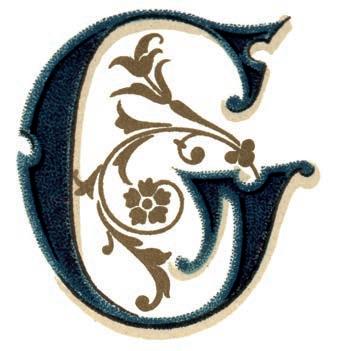
3 minute read
G Glennie
Glennie
The Rev. John David Glennie (1796–1874) is an important figure in the history of Marlborough College.
He was among the group of gentlemen who first argued for the foundation of a school for the sons of clergy, and was present at the meeting in July 1842 when proposals were drawn up to locate it at Marlborough. He was elected to the founding Council of the College, and over the next 30 years helped Marlborough grow from a fledgling school to a powerhouse of Victorian education, bringing expertise as a national Inspector of Schools and author of pamphlets on pedagogy. In many ways he was born to it, having been raised with his 11 brothers in a boarding school run by his father in South London, Dr Glennie’s Academy in Dulwich. This school is remembered as an alma mater of Lord Byron, who attended it from the ages of 11 to 14. It had on its staff the celebrated artist Samuel Prout, later ‘Painter in Water Colours in Ordinary’ to George IV, William IV and Queen Victoria, and a man much admired by Ruskin and Turner. Prout saw artistic ability in young Glennie, and tutored him in landscape art. It was a skill Glennie developed to a high degree,






exhibiting at no fewer than four Summer Exhibitions of the Royal Academy; he was also in demand as a book illustrator, including work for a volume on Byron published in 1832. Glennie’s best-known artistic productions are 50 beautiful lithographic prints of mainly German and North Italian scenes, published as Views on the Continent in two folios in 1841 and 1849. But Glennie also had scientific interests, particularly in the field of entomology. He was an enthusiastic beekeeper, researching the mechanics of stings (using his left hand as a test site), and publishing the findings under the pseudonym ‘J. D. Ottinge’. He became the go-to expert on bees for Charles Darwin, with whom he exchanged scientific letters. Glennie’s pertinence to the Rare Books collection is that he remains the single most generous donor of old and remarkable books in the institution’s history. By the terms of his will of 1874, Glennie bequeathed to the College an astonishing collection of books already scarce in his day. Some had been bought in the late 1700s by his grandfather, John Glennie (1720–1801), minister of Marycultur in Aberdeenshire; others came from the library of his father, Dr William Glennie (1761–1827). Many of the books are Bibles of exceptional interest. One such is the very first Bible to be printed in Spanish. Published in Basel in 1569, it was strictly banned by the Catholic Church, and any copies found were burned, a circumstance that makes surviving examples very rare. Another remarkable book is a Spanish-language text of the Torah printed in Amsterdam for the Hispanic Jewish community expelled from Iberia. Glennie also left the College Paraphrases upon the New Testament by Erasmus of Rotterdam published in 1548–49 under the direction of Catherine Parr, Henry VIII’s sixth wife. From around the same date is his copy of William Tyndale’s translation of the New Testament which is treated here at greater length under ‘T’. Some century and a half after his bequest, the College salutes the Rev. Glennie and honours him still.










